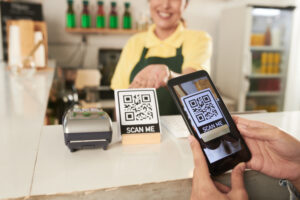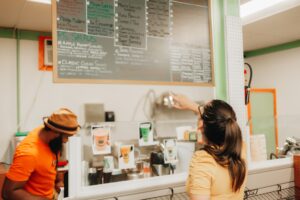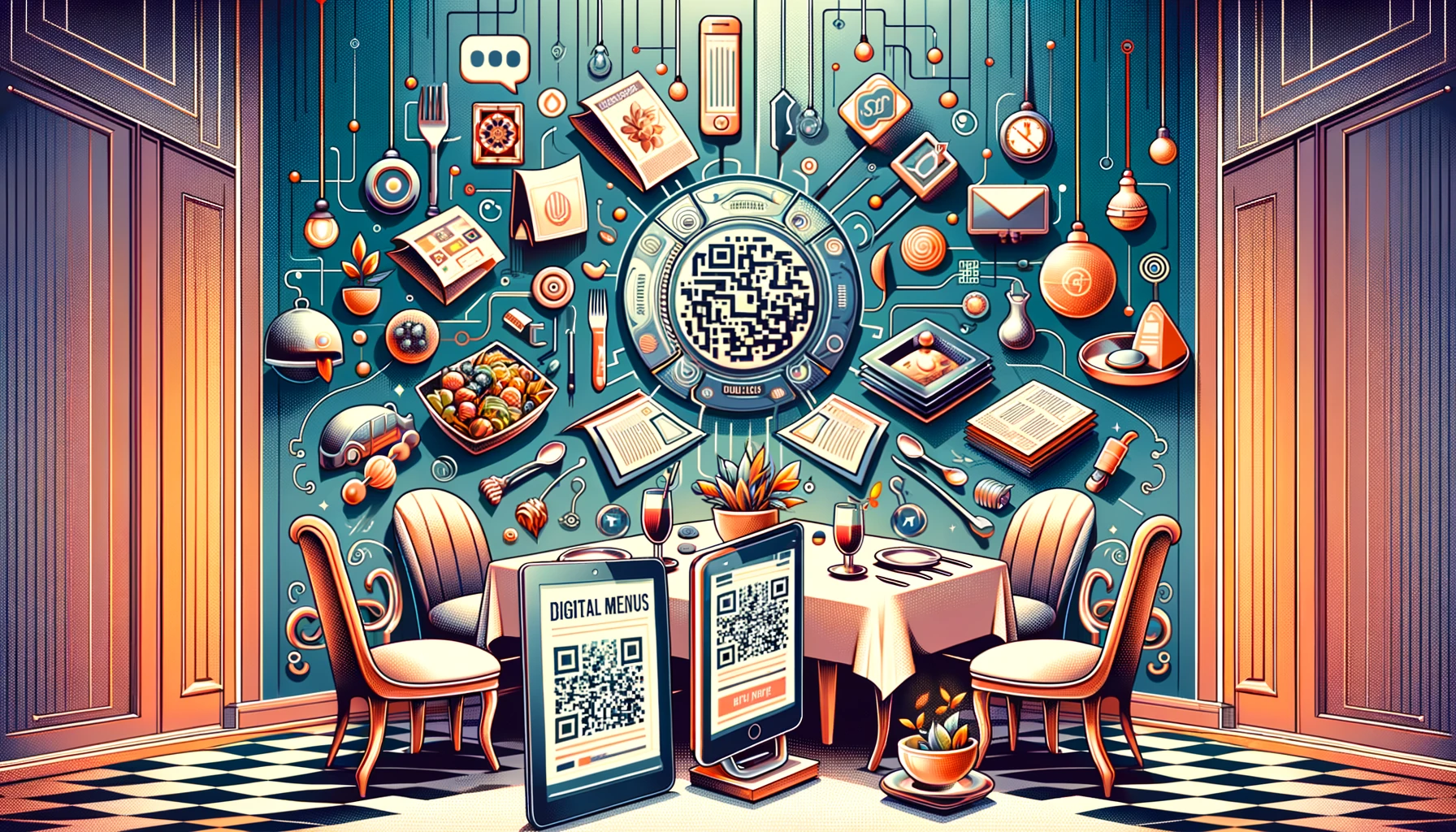If you’re a restaurant owner, you know that taking customer preferences into consideration when coming up with new menus is an essential part of the business. In order to avoid confusing or scaring your customers with too many options, it’s important to have a sense of the type of food they’re looking for. Fortunately, there are a number of ways to find out what people in your area actually want from their menu so that you can provide it in the most efficient way possible.
According to Gallop research, a typical customer spends only 109 seconds perusing a menu. Before making a selection, they peruse the menu, read descriptions, and compare pricing. The average diner checks out the price and then compares it to how much they usually spend in a given restaurant. As you can see, it’s essential to be able to quickly glance over an item on the menu and compare it to what your customers want so that you can come up with something people actually want.
Menu engineering is more crucial than ever during COVID19. The struggles of the previous year and the worries of upcoming challenges and uncertainties can frustrate your customers. To counter this, restaurant owners must be in tune with the present climate in order to attract customers who are ready to spend money. Even as society recovers after the initial disastrous impact of the COVID crisis, the menu engineering research involved in producing a minimum viable menu will aid in the profitability of your menu.
What Is Menu Engineering?

Menu engineering is the process in which you figure out what your customers want and provide it in an efficient and well-planned manner. By putting your menu engineering knowledge to work, you can find ways to improve the profitability of your menu, keep your customers happy, and avoid putting too many options on a menu that overwhelms them. In addition, restaurant owners should also take into account their current competition to get a better feel for what their consumers want.
To correctly construct a menu, you must first understand each menu item’s pricing, food costs per serving, and contribution margin. With this, restaurants may categorise menu items and identify which ones bring more profit and which ones don’t, what should be rethought and what should be deleted from the menu entirely. Thus, by using the collected information, you can create a more manageable and desirable menu for your restaurant.
Consider who has the greatest understanding of your food prices, the performance of menu items, and some expertise in menu design concepts and menu psychology when determining who should face the process of evaluating and rebuilding your restaurant menu. The chef, owner, waiters, and customers are all important in presenting varied viewpoints, and everyone’s perspectives should be inculcated into the process of menu engineering.
The Menu Engineering Process Can be divided into four steps:
Step 1: Determining your Menu Strategy
Step 2: Analysing the menu items on your menu
Step 3: Creating new sales strategies for your menu items
Step 4: Finalising your findings
How to Take the First Step?
Step 1: Determine your Menu Strategy
First of all, it is very important for you to have a clear picture of what your target market is. It really depends on the situation. For example, the market circumstances would be different if you are opening a new restaurant or changing an existing one. In order to decide what menu will be suitable for your restaurant, you need to take into account the following points:
Choose the cuisine you would be marketing very wisely. If you are opening a new restaurant in a town that doesn’t have any other restaurants from your cuisine type, then pick a cuisine that is most appropriate for this area. Opening a restaurant that serves too exotic a cuisine can be at a disadvantage, but the right balance of new and the familiar can be the best approach. Again, avoid opening a restaurant that serves cuisines already served by one too many restaurants in the same area.
If you are opening a fast-food restaurant, the target audience may be people who prefer to eat on the run and don’t have time to go out and get a sit-down meal. On the other hand, if you are opening a sit-down restaurant, you can consider having a broad target market that includes older customers who want comfort food and sophisticated food options.
You need to know how much you are willing to spend on the restaurant. You also need to know how much time you can give it before you start making money off it. If you are not planning on putting money into the place for a long time, make sure it is something that can be done within a short time frame.
You also need to know what type of restaurant you want. Is it going to be a buffet, diner, or just a typical single-service location? Depending on your answer, you have to think about the kind of menu you can provide. It needs to be something that will attract the greatest number of customers. However, if you are opening a typical single-service restaurant, your menu should consist of the most popular items since there will be no buffet or main course. If you are offering a buffet, your menu will have a broader spectrum of items. You also have to consider the available space in the restaurant, as well as the customer flow.
You also need to know what is going to be most efficient for you and your staff. For example, if you have less staff and difficulty in managing your footfall, you should consider investing in a good POS restaurant management system. This way, you can deal with a larger number of customers and avoid errors and mismanagement.
You also need to consider the number of menu items. The fewer the better because you can save on time and money. If you have a lot of menu items, make sure they are easily identifiable and easy to understand. You can do this by putting pictures on them or labeling them both in English and any other language your customers may be able to read.

Step 2: Analyse each item on your menu
Once you have determined your target market, you need to analyse the menu items so that you can determine what kind of menu is best suited for your restaurant. Determine how many items are on your menu. If it has too many items, it may be overwhelming for the customers. If it has too few items, then it just may not be enough to attract customers on a regular basis. You also need to consider the food costs, ingredients, and preparation time for each item. The numbers of the menu items should not be too much. If you have a simple menu with a lot of items, then it might be better to have fewer items that have high food costs.
It is also possible that some menu items are giving you problems. Perhaps a lot of customers are trying to avoid this particular item since they know it is hard to digest or they don’t like the taste. Make sure you take note of these problems and address them under the process of menu engineering.

Step 3: Create new sales strategies for your menu items
Once you have analysed your menu, you need to think about what items are popular and whether they are worth keeping on the menu. If they are not, then you need to decide on the best way to get rid of them without offending current customers or leaving significant costs unaccounted for. You can do this by introducing new items or changing some of the existing menu items so that they are more profitable. This way, you can get rid of the higher-cost food items while keeping your most profitable business lines intact. You also need to consider what you can do to cut down on the cost of your dishes as well as the cost of ingredients, but without affecting the quality of your food. Recipe and inventory management is your best friend when you are dealing with the process of menu engineering.

Step 4: Finalise your findings
After you’ve finished analysing each individual item on your menu, finalise your findings and then turn them into a concrete action plan.
Some good questions to ask yourself include:
What menu items are no longer offered and why? If they are off the menu and seem to be profitable to your restaurant in the long run, how can they be brought back? If you can’t bring them back, is there a substitute for them available that can be adapted by the kitchen staff?
Are there any items on your menu that are not selling as well as they should be? If so, can you invest in detailed analytics and reports? Should you change the pricing on those items? What makes those items more or less desirable?
You should also conduct a complete analysis of your menu to determine if certain items should be priced differently. If an item is not selling, try changing its price point and see if that will make it more appealing to your customers. If an item is selling too well, you may want to consider taking the price down a notch in order to make it seem less expensive. All of these factors sometimes get too overwhelming in the course of establishing and managing a restaurant business. For this purpose, there exists numerous software solutions that restaurants are increasingly turning towards using to better streamline and optimise their business.
Be wary of menu engineering as a trend. While it is particularly relevant during times of economic strain, menu engineering is a way of thinking that will help you prepare for any economic climate, not just a downturn. Menu engineering is about providing a great experience for your guests, from the context of how the menu looks to the satisfaction they feel after enjoying their meal. It is a way of providing yourself with a tunnel vision about how you can implement and further improve your restaurant, both in the short and long term.
While it is important to stay on top of industry trends, it’s also crucial for you as a restaurant owner to think about the customer experience they have at your restaurant, as well as all the other unique qualities that make your restaurant unique from those around including restaurant ambience and restaurant layout. Menu engineering is a way of thinking that helps you figure out how to deliver those unique services and experiences for your guests in a way that will keep them coming back.Not only is loyalty cheaper, it has better returns. According to research, engaged consumers buy 90% more frequently, spend 60% more per transaction and are five times more likely to indicate it is where they would purchase from in the future. On average, they’re delivering 23% more revenue and profitability over the average customer.
In the past few years, restaurants have been expanding their menus, adding more items to them in hopes of getting more customers in their restaurants. But it’s important to be aware of the business risks that come with adding too many items to a menu. In fact, some restaurateurs report they sometimes run on loss from their menus because they simply don’t find a way to make a profit off of them. Menu engineering is a process that helps a restaurant ensure that they’re offering the right dishes on their menu at the best price possible. The process of menu engineering is an important one for restaurants, especially in times of economic downturn. By improving your menu to suit your customers, you can keep them coming back again and again.





